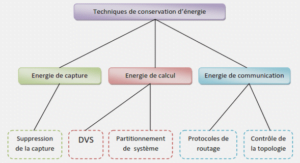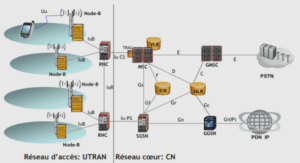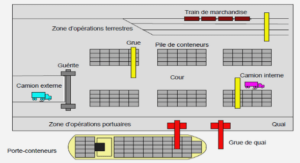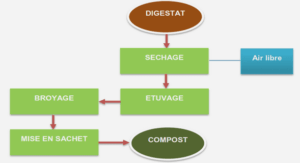Actuators and theirs
Controllers Actuators attached to the inside of morphing wings have been used to control the motions of the upper parts of morphing wings. These actuators can be operated by different energy sources such as electrical currents, hydraulic fluid pressures, or pneumatic pressures. Actuator systems have been incorporated on the aircraft, and were used to control the rudder, slats, flaps, brakes and landing gears for a long time. Table 1.1 presents a list of actuators types along with some typical examples (Zupan, Ashby, & Fleck, 2002). the list, two basic types of actuators can also be distinguished by their motions with respect to the controller command: “linear” and “nonlinear”. “Linear actuators” are the actuators whose motions are directly proportional to the controller’s command, while for the “nonlinear actuators”, this motion relationship is indirect to the controller’s command. The linear actuators are further divided into two groups: “directly linear” and “indirectly linear” actuators. “Directly linear” actuators can use the power from an engine without the need for any power reductions generated by a gearbox, pinion, belts or wheels. In this case, the electrical energy is used directly to achieve “linear motion”. “Indirectly linear” actuators convert electrical energy into mechanical energy with the aim to generate torque or the required moving force. These are mostly “rotary actuators”.
To use indirectly linear actuators for a morphing wing, an adaptive system is required, which translates the rotary motion of the output shaft of a motor into a translational motion capable of ensuring the deformation (shape change) of the wing. The applications of actuators in morphing wing technologies are indeed various. A Macro- Fiber Composite (MFC) actuator system was used to generate surface induced deformation in (Bilgen, Friswell, Kochersberger, & Inman, 2011). Two cascading active surfaces (upper and lower) were used to compose an airfoil. The authors aimed to obtain the highest possible lift coefficient, as well as the highest lift-to-drag ratio. Under the following wind tunnel conditions: Reynolds number of 127,000, a turbulence rate of 0.85% and air velocity of 15 m/s, the research showed that the lift-to-drag ratio was increased by using these composite actuators.
In (2011), Ohanian et al. used piezoelectric MFC actuators for a bimorphed configuration. This configuration was designed to change the aft part of a control surface cross section. From its aerodynamic performance point of view, the approach achieved a larger change in the lift coefficient than the one using a hinged servo-drive flapped airfoil. In (Usher, Ulibarri, & Camargo, 2013), Usher et al. introduced two approaches for designing and manufacturing the control surfaces. One approach involved the formation of flap-like structures by affixing the MFC actuators to the sides of a metal substrate, then attached it to the trailing edge. Another approach showed that MFC actuators were bonded to the wing in a direct way. The direct approach gave a better flexibility than the first approach. However, when they increased wing pressure, there are problems with tension loading, which still has to be solved. In (1999), Pern & Jacob used the piezoelectric effect to control the airflow on the upper surface of an airfoil. THUNDER actuator, a kind of actuator that is built by binding a skinny sheet of piezoelectric ceramic under hydrostatic pressure between an aluminum electrode and a metal substrate, was created for the adaptive airfoil.
The experiments showed that a maximum change of 1 cm of the wing’s leading edge was achieved when voltage was put on the actuators; and the amplitude of flutter vibration was also lower. The piezoelectric effect was also used in (Munday & Jacob, 2002) and (Munday, Jacob, Hauser, & Huang, 2002). In both studies, piezoelectric actuators were used for a NACA 4415 wing. In the research works, the flow separation over the wing’s upper surface was investigated. The experimental results obtained in their laboratory revealed that with the help of the actuators, a reduction of 30-60% was found in the separated flow size with respect to the flow size on a shaped static wing. The researchers have also developed an approach using a wing airfoil that adapted to flow conditions, and its aerodynamic performance was improved over its upper surface for low Reynolds numbers with low speeds. Experimental tests with the wing was also carried out at different angles of attack, speeds and Reynolds numbers. Pressure signals were used to provide feedback signals to a real-time controller to extend the laminar flow over the upper surface of the wing, thereby delaying the transition zone.
Originality
Several researchers have been working on improving the airfoil flow to enhance the dynamic performance of morphing aircraft systems. However, most of the studies have used intelligent materials for the actuation of the morphing systems. The CRIAQ MDO 505 research team decided to use Brushless Direct Current (BLDC) motors for the actuation mechanism. BLDC motors are miniature permanent magnet synchronous motors that offer many advantages such as high flexibility, good controllability, high power density, high efficiency, large torque to inertia ratio, as well as light weight. Compared to Permanent Magnet Synchronous Motors (PMSMs), BLDC motors are less expensive as they have concentrated windings and use Hall-effect sensors, which are cheaper than the position sensors required by PMSMs, such as optical encoders. This thesis considers, for the first time, using two types of ANFIS controllers to control the actuators in a Bombardier aircraft morphing wing-tip system for both cases; those in which the aileron moves and when it stays still. Both controllers were experimentally tested in a wind tunnel with a morphing aileron installed on a wing. These two controllers, based on a Neuro-Fuzzy methodology, offer promising approaches for actuator control. The first controller is built with trapezoidal-shape input membership function and constant output membership function. The second controller is built with bell-shape input membership functions and linear output membership functions. Maxon industrial drives are used to implement these algorithms into the real-time morphing wing-tip system. The control architecture using National Instruments systems in real time is also proposed and implemented for the first time in the morphing wing-tip system. Problems encountered during the Wind Tunnel Test validation are also mentioned and solved.
Actuators The morphing wing’s actuation system is composed of four actuators fixed inside the wing. Four BLDC motors serve as electrical motion sources, one for each actuator. These Maxontype motors have the characteristics indicated in Table 3.1. To convert the motors’ rotary motion to the vertical motion of the wing’s upper surface, each actuator has a gearing system equipped with a nut, which is joined to the shaft of its BLDC motor. As known, a brushless DC motor is a synchronous electric machine driven by DC electricity. BLDC motors can be used in single phase, 2-phase or 3-phase power stage. The BLDC motors used in the project are constituted as 3-phase power bridges corresponding to, three windings of the stator. Figure 3.3 shows the BLDC motor in its cross section. The BLDC motors use the interaction between the stator flux with the rotor flux, generated by permanent magnets, to create the torque. Because of the fact that the rotor flux is induced by the stator poles flux, the stator pole position of a BLDC motor needs to be checked to Nominal voltage 12 volts control its 3 motor phases.
Thus, a 6-step commutation configuration is built by a motor controller. These commutation steps, or commutation phases, help to create a rotational electromagnetic field, which provoke the rotation of the rotor permanent magnets and move the motor shaft. In order to create these commutation phases, six power transistors corresponding to six commutation steps are used for 3 phase’s power stages (X, Y and Z). Among these 3 phases, only two phases are active at the same time, the remaining phase stays unpowered (or off). One of these two active phases has positive or negative voltage, while the remaining active phase has negative or positive voltage, respectively, and create 6 commutation steps as shown in Table 3.2. The Hall-effect sensors determine the positions of the rotor. The stator flux vector was based on the positions of rotor to change so that the angle between the stator flux and the rotor flux remains as close as possible to 90 degrees. In that way, the rotor of the BLDC motor keeps moving. Table 3.2 and Table 3.3 shows the 6 commutation phases for two cases: clockwise rotation and counterclockwise rotation. The values of Hall-effect sensors are also presented: 0 means the Hall sensor is inactive, while 1 denotes that Hall sensor is active.
|
Table des matières
INTRODUCTION
LITERATURE REVIEW
1.1 Morphing Skins
1.2 Actuators and theirs Controllers
PROBLEMS AND OBJECTIVES
2.1 Problems
2.2 Objectives and Project Description
ORIGINALITY AND METHODOLOGY
3.1 Originality
3.2 Morphing wing and aileron system
3.2.1 Morphing wing-tip model
3.2.2 Actuators
3.2.3 Sensors
3.2.4 Ailerons Control
3.3 Operating System Hardware and Software
3.4 Controller Design and Actuation System
3.4.1 System Control Architecture
3.4.2 Actuator Control Architecture
3.4.3 Adaptive Neuro-Fuzzy Infererence System (ANFIS) Control Methodology
3.4.4 First Controller Description
3.4.5 Second Controller Description
WIND TUNNEL TESTS
4.1 Description of the Wind Tunnels
4.1.1 Price-Païdoussis Subsonic Blow Down Wind Tunnel
4.1.2 Institute of Aerospace Research (IAR) – National Research Council (NRC) Wind Tunnel
4.2 Test Calibration
4.2.1 Wing Shape Scanning Techniques
4.2.2 “Play Zone” Calibration
4.2.3 LVDT/DI Calibration
4.3 Wind Tunnel Test Description
4.4 Results obtained in the IAR-NRC Wind Tunnel Tests
4.4.1 First controller Wind Tunnel Test
4.4.2 Second controller Wind Tunnel Test
4.4.3 Comparison of two controllers’ performance in the Wind Tunnel test and Discussion
4.4.4 Data Postprocessing uses the STD/FFT and Infrared methods
CONCLUSION
ANNEX I MORPHING WING AND AILERON (WING-TIP) SYSTEM
APPENDIX I FLOW PHASES ON A AIRFOIL
APPENDIX II KULITE SENSORS POSITIONS
APPENDIX III CALIBRATION
APPENDIX IV FLIGHT CASES
APPENDIX V CONTROLLERS’ PERFORMANCE IN THE WIND TUNNEL TEST
LIST OF BIBLIOGRAPHICAL REFERENCES
![]() Télécharger le rapport complet
Télécharger le rapport complet






